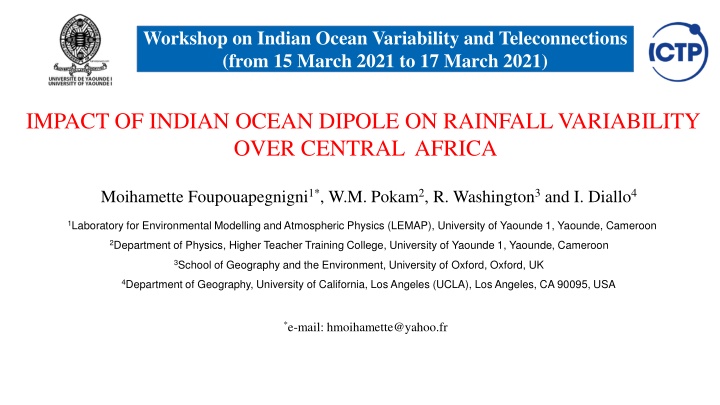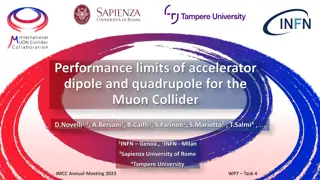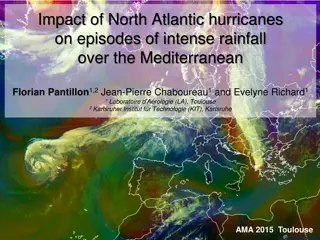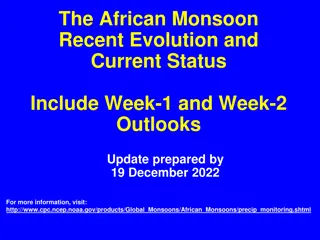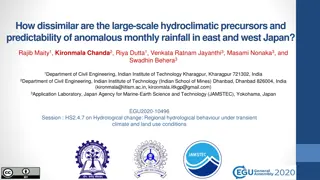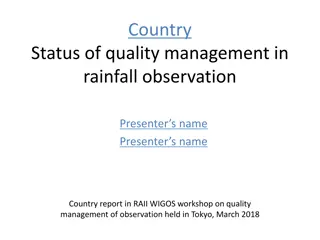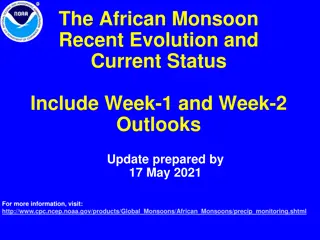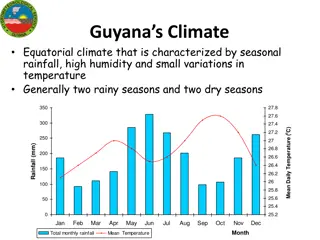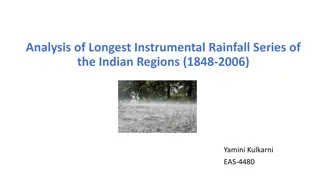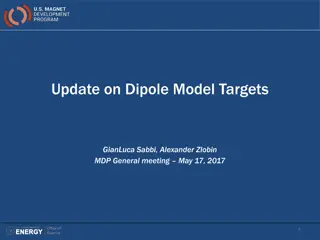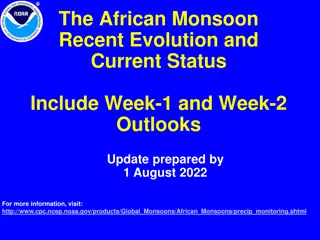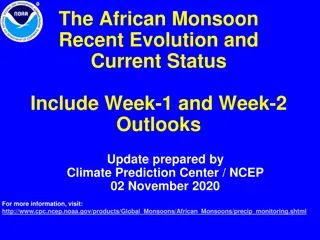Impact of Indian Ocean Dipole on Central Africa Rainfall Variability
Workshop on Indian Ocean Variability and Teleconnections discussed the assessment of the link between Indian Ocean Dipole (IOD) and rainfall variability in Central Africa. The study utilized precipitation data, sea surface temperatures, and dynamic variables to analyze the impact of IOD events on Central Africa. Results showed distinct patterns in precipitation response to positive and negative IOD events, with moisture transport playing a key role during these events.
Download Presentation

Please find below an Image/Link to download the presentation.
The content on the website is provided AS IS for your information and personal use only. It may not be sold, licensed, or shared on other websites without obtaining consent from the author.If you encounter any issues during the download, it is possible that the publisher has removed the file from their server.
You are allowed to download the files provided on this website for personal or commercial use, subject to the condition that they are used lawfully. All files are the property of their respective owners.
The content on the website is provided AS IS for your information and personal use only. It may not be sold, licensed, or shared on other websites without obtaining consent from the author.
E N D
Presentation Transcript
Workshop on Indian Ocean Variability and Teleconnections (from 15 March 2021 to 17 March 2021) IMPACT OF INDIAN OCEAN DIPOLE ON RAINFALL VARIABILITY OVER CENTRAL AFRICA Moihamette Foupouapegnigni1*, W.M. Pokam2, R. Washington3 and I. Diallo4 1Laboratory for Environmental Modelling and Atmospheric Physics (LEMAP), University of Yaounde 1, Yaounde, Cameroon 2Department of Physics, Higher Teacher Training College, University of Yaounde 1, Yaounde, Cameroon 3School of Geography and the Environment, University of Oxford, Oxford, UK 4Department of Geography, University of California, Los Angeles (UCLA), Los Angeles, CA 90095, USA *e-mail: hmoihamette@yahoo.fr
Aim, Data and Methodology Aim The aim of this study is to assess the possible link between the IOD and Central Africa rainfall Data Precipitations : (GPCC) Full data (Schneider et al. 2014), (CRU TS4.04; Harris et al. 2020) at 0.5 0.5 , MERRA-2 (Gelaro et al. 2017) at 0.5 0.625 resolution and ERA5 (Hersbach et al. 2020) is on a 0.25 0.25 spatial grid. Sea Surface Temperature (SST) : ERA5 (Hersbach et al. 2020) is on a 0.25 0.25 Dynamic variables : MERRA-2 (Gelaro et al. 2017) at 0.5 0.625 resolution and ERA5 (Hersbach et al. 2020) at 0.25 0.25 Climatology : 1980-2016 from Septembre to December Methodology -An IOD event is detected using Dipole Mode Index (DMI) which is defined as the difference in SST anomalies between western(10 S 10 N, 50 70 E) and eastern (10 S 0 , 90 110 E) equatorial Indian Ocean (Saji et al. 1999). DMI is expected to be higher than one standard deviation and should remain so for 3 to 4 months, in an IOD year (Vinayachandran et al., 2009). - Use composite and statistical analysis to study rainfall and moisture flux patterns
Response of precipitation to IOD events SON DMI ( C) It results in 12 IOD years including : 5 positives IOD (pIOD) events (1982, 1994, 1997, 2006, 2015) 7 negatives IOD (nIOD) events (1984, 1992, 1996, 1998, 2005, 2010, 2016) Anomalous Precipitation Composites (mm/day) Stippling indicates statistically significant at the 95% level using t-test nIOD events pIOD events
IOD+ENSO IOD-ENSO Impact of (DMI with Nino-3.4 included) (DMI with Nino-3.4 removed) IOD+ENSO vs IOD-ENSO In general, rainfall increases with the intensity of DMI. This increase is strengthened by removing the effects of ENSO. Regressions of Central Africa rainfall onto DMI. Stippling indicates statistically significant at the 90% level Scatter diagram revealing relationships between DMI and Ni o 3.4 during the SON season. ERA5
Response of moisture transport to IOD events Moisture flow advection is greater during pIOD than nIOD events and it is maximum between 600 and 700 hpa over CA Composite anomaly of vertically integrated moisture flux(vectors: kg m 1 s 1) and vertically integrated moisture flux convergence (shading: 105 kg kg-1 s 1) Only vectors significant at 95% are represented. Longitude-height Cross-section (10 S-10 N) of Zonal moisture flux
Summary Central Africa (CA) rainfall exhibits an opposite pattern between pIOD and nIOD events. Indeed, both observational and reanalysis data reveal that pIOD events are associated with above-normal rainfall while nIOD events result in a rainfall deficit over CA. Rainfall intensity increases with the strength of the DMI, although some regions show the opposite pattern. The relationship between CA rainfall and IOD is stronger after removing the ENSO signal from the IOD. Transport of the moisture flux shows a strengthening (weakening) of the moisture flux convergence over the entire troposphere. Rainfall variability during both phases appears to be influenced by changes in circulation, with moisture flux from the equatorial and the eastern Indian Ocean above (below) normal during pIOD (nIOD) events. Anomalous patterns are more evident in October and November with an asymmetry in the magnitude of the anomalies of the two phases of the IOD characterised by stronger pIOD events anomalies.
